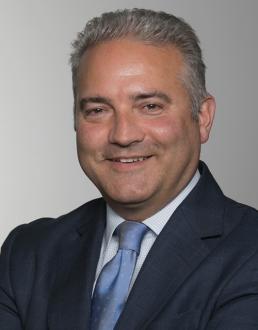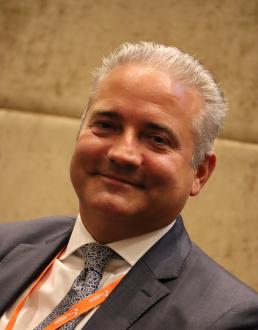Market Dislocations and the Current Financial Environment: Challenge or Opportunity?

Rossen Djounov of GAM Investments
Aug 28, 2019
Armed with some detailed and insightful slides, Rossen Djounov, Managing Director and Head of Asia for GAM Investments, gave a presentation at the Hubbis Malaysia Wealth Management Forum to discuss whether slower growth, weaker earnings and elevated stock and bond valuations should be considered a challenge or an opportunity. The classic ‘balanced’ portfolio is no longer fit for purpose, he said, and diversification should be enhanced by including non-directional, alpha-generating and relative value strategies. Moreover, opportunities within the credit universe, emerging market debt and commodity trade finance can offer new sources of return that are less correlated with traditional assets.
He began by remarking that the current equity market cycle is now in its tenth year of expansion. “It is actually neither excessive relative to previous cycles over the last 100 years in duration or in magnitude,” he stated, “so provided the economy can continue to plod along and Donald Trump and Xi Jinping don’t get into the trade war beyond what we have already seen, this is likely to continue for some time.”
As for rates, he highlighted the ongoing 35 year plus bull market for fixed income. “Again, current levels are neither excessive nor specifically prolonged,” he said, “although in Europe and Japan interest rates have been in negative territory for quite a while now, so opportunities are not widely spread. However, opportunities still exist in certain markets and asset classes.”
Higher risk, higher risk aversion
He added that it should not be a surprise to anyone to see that the risks in markets are measured in terms of elevated volatility, but also in terms of risk aversion. “Again,” he said, “we consider that looking back over history, we are now not in excessive territory either on the positive or on the negative side.”
He pointed to a chart showing the dispersion between different high yield bonds now and immediately before the global financial crisis back in 2007.
“Actually,” he said, “this shows there is far more opportunity today for active bond pickers to realise value in fixed income than around the time before the GFC. But there is considerably less paper available today, as inventory is actually at record lows, so investors wanting to adjust positions are not enjoying the liquidity previously offered by the investment banks and broking houses. That means volatility in the markets is in fact amplified.”
He pointed to another slide to highlight trends in open interest credit default swaps, essentially insurance instruments against credit risk in the market.
“You can see it is trending upwards, meaning an increasing number of market participants are concerned about current levels of valuations in the fixed income space and are choosing to pay a premium to get insurance against adverse movements, in other words against downward movements in credit spreads. Moreover, the former well-used strategy of buy and hold into passive instruments such as highly-rated government bonds no longer works due to the lack of carry.”
Turning to the opportunities, he remarked that markets are dislocated and will likely continue to be volatile as they respond to political news, to the economic news and given the very low direct liquidity from the broker-dealer market.
Dislocations = opportunities
“That will also create dislocations and opportunities,” he concluded, “so we propose an active approach with selection that will create opportunities to generate alpha and outperform both in absolute and relative terms.”
He noted that within the ongoing, or recharged universe of quantitative easing, these discussions for future interest rate cuts and quantitative easing in Europe in particular will have additional stimulus effect on markets. “They will create additional uncertainty which active managers can exploit,” Djounov advised. “But staying invested and staying long risk is necessary to realise these opportunities, although risks are clearly there.”
He turned then to earnings. “We can safely say that currently the markets are in a post-peak environment,” he observed, “as from an earnings perspective, peak earnings have already been observed in US equities. From here on, we will rely on a combination of earnings stability and interest rate stability that eventually leads to multiple expansion, but the valuation multiples that I highlighted in the charts today cannot expand forever.”
Accordingly, Djounov said he will gaze into his crystal ball and review some scenarios. “Looking at the running of what we advise as a diversified multi-asset portfolio, we think the traditional approach 60-40 equities-bonds no longer works, so you need to look for additional alternative differentiated, uncorrelated sources of income and return to reduce the overall volatility of your portfolios.”
He commented that the market goes through positive to negative correlation between equities and bonds. “We are currently in this enviable stage where correlation between equities and bonds is negative, we think mainly because inflation in markets is still missing. Accordingly, for as long as we have positive economic growth and lack of inflation, we will continue to make money out of both ends, but should inflation rise then all the bets are off and you need alternatives to diversify the risks that traditional markets currently offer.”
He closed with his view that the most likely outcome is that the global economy continues to plod along, volatility persists in markets and investors must therefore exploit opportunities from an active portfolio management basis and search and introduce to their portfolios all kinds of alternative return sources to reduce the risk and maintain returns for their portfolios.

Global Head of Distribution and Client Solutions at GAM Investments

More from Rossen Djounov, GAM Investments
Latest Articles
Wealth Solutions & Wealth Planning
Investment Migration, Residency & Citizenship – Key Trends Relevant to HNW and UHNW Private Clients






